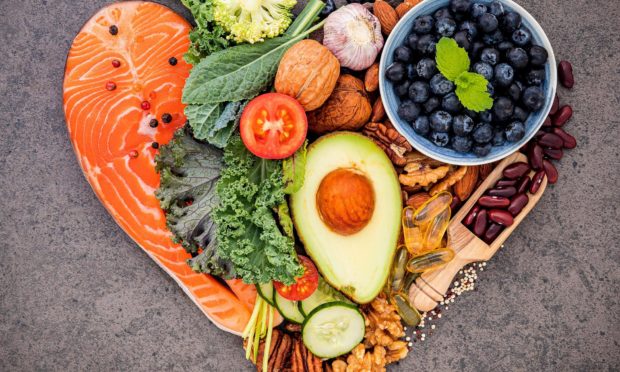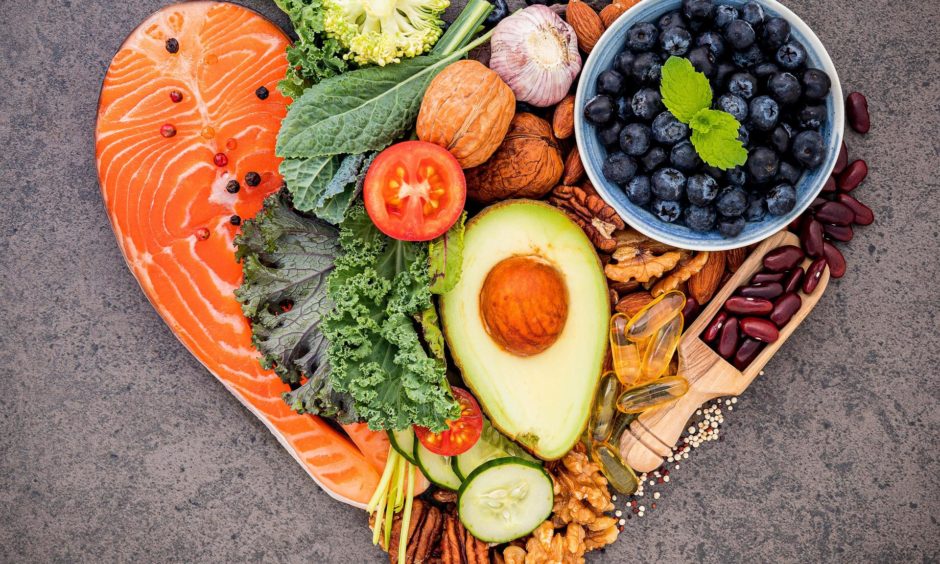In National Cholesterol Month, Heart UK is calling for everyone to get clued up on how to manage their levels. Here, we reveal five of the best foods to help you do just that.
Most of us will be aware that having high cholesterol levels in our blood is not good for us – but do we really know why?
The straightforward answer is that high cholesterol raises your risk of serious health conditions, including heart attack and stroke. The good news is, there is plenty we can do to either avoid it, or lower our levels if they are already on the high side.
And one of the best ways we can lower our cholesterol levels is through what we eat.
Along with smoking, and hereditary factors, a diet high in saturated fat is one of the biggest risk factors for high cholesterol, which you can have measured through a blood test.
The NHS Inform website explains the difference between “good” and “bad” cholesterol:
“Cholesterol is carried in your blood by proteins. When the two combine, they’re called lipoproteins. There are two main types of lipoprotein. High-density lipoprotein (HDL) carries cholesterol away from the cells and back to the liver. From there it’s either broken down or passed out of the body as a waste product. For this reason, HDL is referred to as ‘good cholesterol’ and higher levels are better.
“Low-density lipoprotein (LDL) carries cholesterol to the cells that need it. If there’s too much cholesterol for the cells to use it can build up in the artery walls, leading to disease of the arteries. For this reason, LDL is known as ‘bad cholesterol’.”
If your blood contains too much LDL, that’s known as high cholesterol – and that’s what we want to avoid. In this, National Cholesterol Month, the charity Heart UK is urging every one of us to get clued up on how to manage our cholesterol levels – and they have a free mini-guide to help get us started.
Today is the start of National Cholesterol Month! HEART UK is on a mission this month to encourage everyone to Clue-up for Cholesterol, so kick-start your heart-health journey – we’ll even send you a free download of our Easy Mini-Guide to cholesterol! https://t.co/JNJFDzCris pic.twitter.com/BZaXjd8q6K
— HEART UK (@heartukcharity) October 1, 2020
In partnership with California Walnuts, Lynne Garton, dietetic adviser for HEART UK shared her five healthier eating tips.
She said: “Eating healthily and being active are important for keeping your cholesterol at a healthy level because too much cholesterol can lead to health problems and increase the risk of heart disease and stroke.
“Replacing foods high in saturated fat with those containing unsaturated fats, such as walnuts, oily fish and avocados, is one very good way to help manage cholesterol. Walnuts also contain fibre, making them a great heart healthy choice.”
Five foods to help reduce cholesterol
Walnuts
Walnuts are the only tree nut to contain significant amounts of the plant-based essential omega-3 ALA (2.7g/30g), which contributes to the maintenance of normal blood cholesterol levels[3]. Research has also shown ALA to have a beneficial role in the prevention of heart disease and stroke. In addition, a handful of walnuts a day (30g) have been shown to have a positive effect on the elasticity of the blood vessels – helping to keep the cardiovascular system healthy.
Oily Fish
Cutting down on saturated fat can be a great way to lower cholesterol and it is important to replace some of this with unsaturated fats. Oily fish is a good source of these, specifically omega-3 fats. Aim to eat two portions of fish per week, at least one of which should be oily. A portion is 140g, but you could have two or three smaller portions throughout the week. Tinned, frozen or fresh all count e.g. salmon, sardines, pilchards, trout, herring and mackerel.
Oats
Oats and barley are grains which are rich in a type of fibre called beta glucan. Eating 3g of beta-glucan daily, as part of a healthy diet and lifestyle, can help to lower cholesterol[5]. When you eat beta glucan, it forms a gel which binds to cholesterol-rich bile acids in the intestines. As your liver has to take more cholesterol out of your blood to make more bile, this lowers your blood cholesterol. Aim for three servings of oat-based products or barley per day, as this will give you around 3g of beta glucans. Examples of a serving include a bowl of porridge, a bowl of oat-based breakfast cereal flakes, three oatcakes or 30g oats added to recipes.
Beans
Some types of fibre can help to lower cholesterol as they block some cholesterol from being absorbed from the intestines into the blood stream. Pulses such as beans, peas and lentils are particularly high in this kind of fibre. When aiming for at least five portions of fruit and vegetables a day, make at least one of these beans, peas or lentils. Three tablespoons of beans, peas or lentils equals one portion.
Fruit and vegetables
Eating plenty of fruits and vegetables can help reduce the risk of heart disease and stroke. The majority are low in fat and calories and contain vitamins, minerals and plant chemicals which can help you to stay healthy and maintain a healthy weight. Aim for at least five portions of fruit and vegetables a day (an adult portion is around 80g, or a handful). Fruits and vegetables can be fresh, tinned, frozen or dried.
More on healthy eating:

